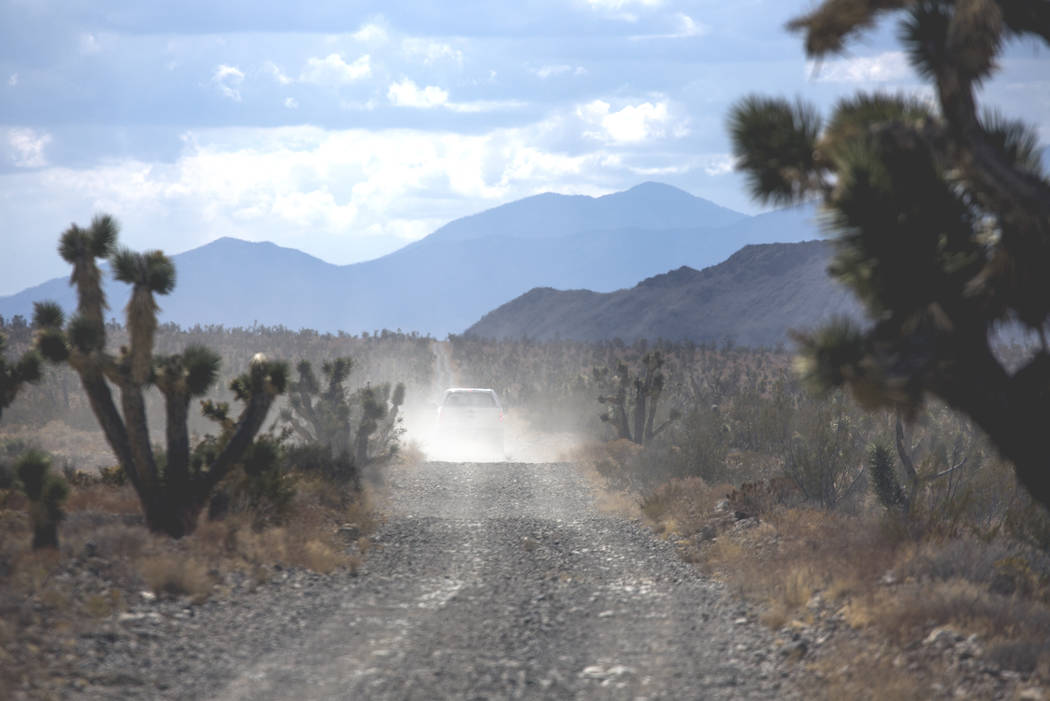32,000 show opposition to Air Force range expansion in Nevada

More than 32,000 people submitted comments in opposition to the Air Force’s plan to expand its bombing range and cut off access to most of Desert National Wildlife Refuge north of Las Vegas.
A coalition of conservation groups fighting the expansion said its supporters were responsible for almost 33,000 comments submitted by Thursday’s deadline for public input on the proposal.
Patrick Donnelly of the Center for Biological Diversity called it “a vibrant display of support” for the refuge and its protected population of bighorn sheep and other wildlife.
“People from Nevada and across the United States are urging the Air Force not to take this destructive step,” said Donnelly, Nevada state director for the Tucson, Arizona-based environmental group. “Not one acre of the refuge should be handed over for military industrialization.”
The Air Force wants to add 301,507 acres to the Nevada Test and Training Range, a secure area that already covers more than 2.9 million acres in Clark, Lincoln and Nye counties. Roughly 278,000 acres of the expansion would be carved from the wildlife refuge, about half of which is already under military control.
Environmentalists, hunters, off-road enthusiasts and tribal groups have all come out against the expansion, which they say will endanger wildlife, cut off access to public land and hurt rural recreation economies.
Poking holes in plan
Most of the submitted comments were form letters produced by the conservation groups as part of an organized campaign that featured its own social media hashtag: #DontBombTheBighorn.
The Center for Biological Diversity, Defenders of Wildlife and the Sierra Club also teamed up on a detailed 51-page response to the Air Force’s environmental review of the expansion plan, while the Friends of Nevada Wilderness submitted 14 pages of its own input.
Donnelly said it wasn’t hard to poke holes in the Air Force’s legislative environmental impact statement (LEIS).
RIGHT-CLICK TO ENLARGE
“The LEIS is a joke. It went beyond minimizing impacts,” he said.
Military officials want the additional land to increase the range’s training capacity and enable more realistic combat exercises featuring the latest military aircraft and enemy countermeasures.
The action also would extend — perhaps indefinitely — the military’s hold on all the land previously withdrawn from public use for the test range under a congressional decree last renewed in 1999.
A fight for every foot
No new bomb impact areas are planned as part of the expansion, but Air Force officials want primary control of an 846,000-acre portion of the range that already overlaps Desert National Wildlife Refuge.
That land has been off-limits to the public for years.
By relinquishing it to the Air Force and erasing thousands of acres of proposed wilderness there, the military will have the “ready access” it needs to conduct exercises on the land.
But Donnelly said his group plans to fight to keep the military from gaining control of even a single square-foot of that land.
“We feel like something terrible would be lost for wildlife and the American public if the joint-custody area is transferred to the Air Force,” he said.
Military officials said Friday they were still compiling the public comments and could not give a total number.
Public input deemed substantive will be included and addressed in the Air Force’s final environmental impact statement, slated for release this fall.
Congress, which has the final say on the expansion, is expected to take up the matter by 2021, when the current land withdrawal for the test and training range is set to expire.
Contact Henry Brean at hbrean @reviewjournal.com or 702-383-0350. Follow @RefriedBrean on Twitter.